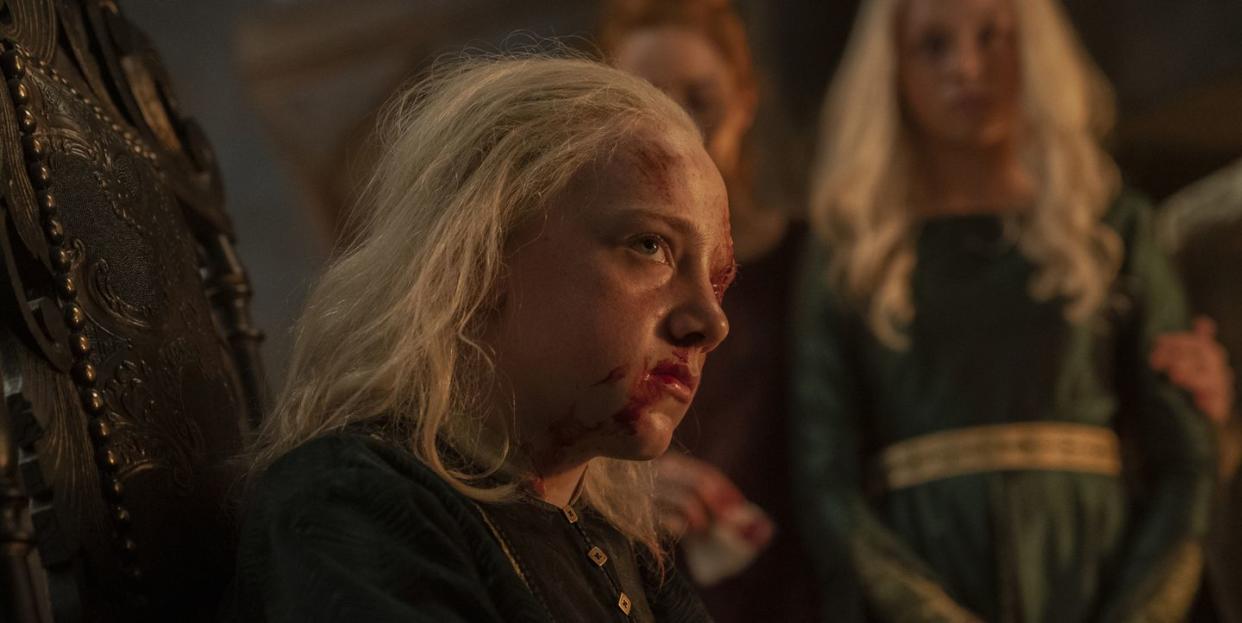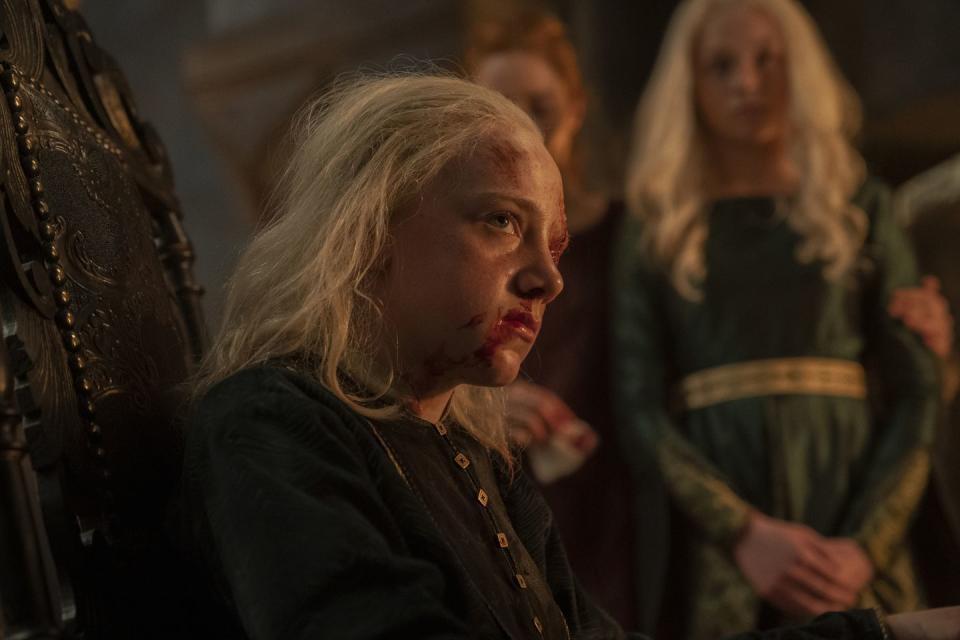'House of the Dragon' Finally Taught Us How to Tame a Beast

- Oops!Something went wrong.Please try again later.
- Oops!Something went wrong.Please try again later.
- Oops!Something went wrong.Please try again later.
Casual fans of the Game of Thrones television show may not know, but high fantasy series like Game of Thrones (and the most famous example of the genre, Lord of the Rings) are known for intense world-building. These are situations where the authors behind the stories spend immense amounts of time crafting histories and minute details about the rules their worlds follow, so that readers can easily immerse themselves into a vast universe that appears as complex as reality. George R. R. Martin’s world-building resulted in Fire & Blood, the book House of the Dragon is based on. It also is the reason he created the language of High Valryian.
While in the novels High Valryian isn’t spoken in much more than a few words, the Game of Thrones television show found an opportunity to further establish what the novels only hinted at. To bring High Valryian to the screen, American linguist David J. Peterson used the few words Martin mentioned in the novel as a starting point. Now on House of the Dragon, Peterson has only continued to showcase the hundreds of words created for both Martin’s book series and its two television adaptations.
Viewers learned a new High Valryian word in Episode 7 of House of the Dragon, when Aemond, one of Alicent’s sons, seeks to ride Vhagar, Laena’s dragon. Vhagar appears to still be distraught over the death of his master (considering he technically killed her himself) and isn’t in the mood to take on a new rider. That is until Aemond begins to speak to Vhagar in High Valyrian and says a new word we haven’t heard before: Lykiri.

So what does it mean in High Valyrian?
Lykiri means “calm down” in High Valyrian.
According to Esquire, lykiri means calm down in High Valyrian. Aemond also says “Dohaeris” and “Soves,” which mean obey and fly, respectively.
Mental Floss explains High Valryian comes from Old Valyria, a sort of long-gone Ancient Rome for the people in Game of Thrones. High Valryian is a relic from that era, and one of the descendants of Valyrian, the overarching family of languages which also includes Low Valryian, a language spoken by common people rather than elites. In Game of Thrones, Danaerys spoke in both High and Low Valyrian as she traveled to various regions of Westeros and spoke with civilians from various societies.
Expect more High Valryian as House of the Dragon continues. The Targaryens are all about history, tradition, and nobility, so it only makes sense they’d continue to use a language specifically made for the upper class to keep their schemes hidden from anyone not in the family.
You Might Also Like

